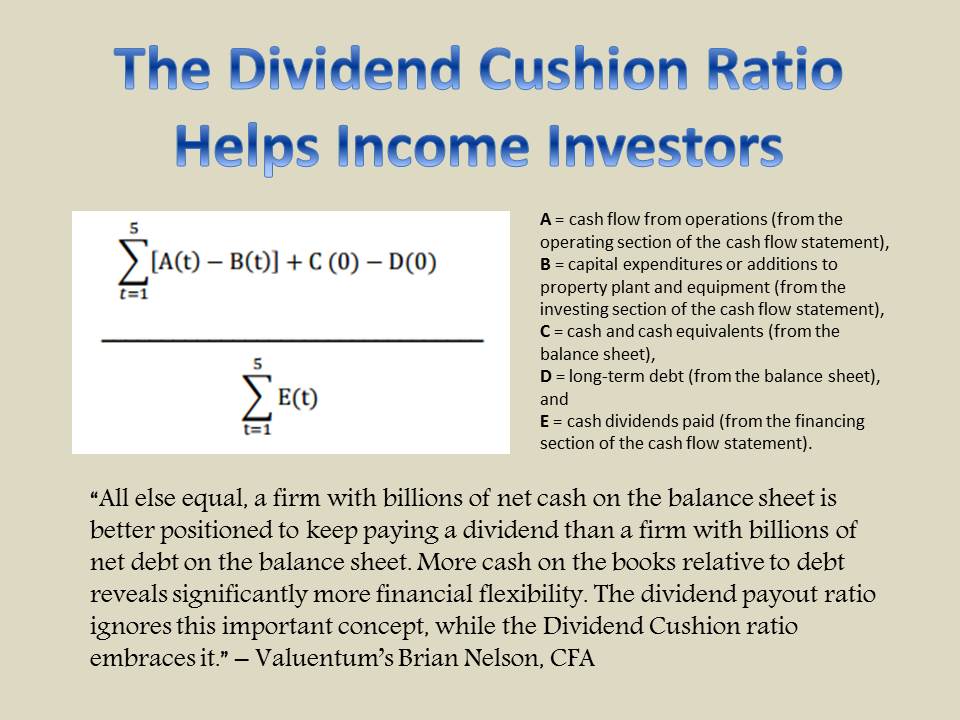Member LoginDividend CushionValue Trap |
Nearly 60 Distribution Cuts Later, We Maintain Our View on the Hazards of the MLP Business Model
publication date: Mar 15, 2018
|
author/source: Kris Rosemann and Brian Nelson, CFA
Image Source: Brian Cantoni Valuentum has been highlighting the inherent risks associated with the master limited partnership (MLP) structure for some time now, but we are not alone in acknowledging the limited sustainability of such structures. Internal simplification transactions may only become more common moving forward as management teams seek to optimize the structure of their entities. Readers should continue to cast a skeptical eye on this business model. By Kris Rosemann and Brian Nelson, CFA Quite possibly, Valuentum made the “call of the century” when it outlined its warning on MLPs in June 2015, embedded in its Kinder Morgan (KMI) “call,” and more explicitly in September 2015, “Why the MLP Business Model May Be a Goner.” There was a rebuttal to our take “MLPs for the Long Run,” that tried to poke holes in our independent, authentic thesis. At the time, we were very surprised, but we appreciate varying opinions on the matter, as that's what makes a market. When debate and discussion happen, investors win! Let’s fast-forward to today. The firm that had issued a rebuttal to our opinion in 2015 noted that, “in fact, more MLPs cut distributions (21) in 2015 than in any other year in the sector’s history (March 2016).” Further that same firm noted in a subsequent October 2017 piece that “companies in the Alerian MLP Index have reduced distributions 56 times, including 45 explicit cuts and 11 stealth cuts over the last 3 years.” The very crux of our thesis in mid-2015 had been that MLPs were being “incorrectly” valued on the basis of a distribution yield. Here’s what the firm that had rebutted our thesis in 2015 is now saying, from that same 2017 piece: Investors in the U.S. midstream energy sector should be aware of the number and level of dividend cuts announced by MLPs and understand that distribution yield may not be as effective a valuation metric as it once was (source). Certainly, it has been a wild ride for investors in MLPs during the past few years, and we think our “warning” on the space in mid-2015 saved throngs of investors from multiple income disappointments. There have been dozens of instances of companies “cutting” their distributions in the Alerian MLP index since our call in mid-2015, and I don’t think we could have done a better job getting out there, helping investors get ahead of what we thought was to come. Our assessment that MLPs were being “valued” incorrectly on a structural basis, a collapsing crude oil price environment at the time, and tightening credit market conditions with deteriorating credit quality in the customer base were but three of many colliding criteria that led to our major concerns. Today, we maintain our view that the sustainability of the MLP structure (AMLP) may be in jeopardy over the long haul, as in our view, the primary reason why we think the MLP model had existed in the first place--to capture a “yield valuation” mispricing in the market to raise funds--has effectively gone away. It had been our contention that prior to the collapse of the MLP space in mid-2015, MLPs acted as a vehicle to take advantage of favorable capital-funding conditions, where MLPs would sport prices and issue equity on the basis of market “yield valuation” approaches. The issuer could float (create) an MLP and the market would end up pricing MLP units on the basis of their “yield,” instead of on organically generated free cash flows, which include growth capital spending. Since most MLP distributions approximate an MLP’s measure of distributable cash flow, the energy complex effectively had been using the MLP business model to raise external capital within the corporate umbrella at a lofty price on the basis of the market’s “yield valuation,” instead of on the basis of internally-generated free cash flow. A systematic mispricing had occurred in an environment of ultra-low interest rates during 2015, and when the energy complex faced a massive threat given the collapse in crude oil prices, many owners of midstream MLPs realized that midstream equities were not immune to the troubles of their customers, as even fixed and seemingly iron-clad contracts could be broken during the chapter 11 process. Even some of the stronger oil and gas producers, for example, were facing tough times, and even while many midstream MLPs had a small percentage of direct exposure to energy prices, through their customers, the exposure was quite large. Unless the market goes back to valuing MLPs on the basis of “yield,” we doubt the MLP business model will catch much favor again, and we continue to expect it will not last over the long haul. For starters, many MLPs do not generate sufficiently positive free cash flow, as measured by cash flow from operations less all capital expenditures (both maintenance and growth) in any given year, but most continue to pay lofty and growing distributions to unitholders, with “safety” represented by the industry-specific coverage measures using distributable cash flow, which ignores the growth capital spending that helps to drive net income, the core component of distributable cash flow. When it comes to the concept of distributable cash flow, there remains an imbalance, see: “MLP Speak: A Critique of Distributable Cash Flow.” We think the market may have wised up on how to “value” MLPs, and we continue to see instances where MLPs are being consolidated or folded up. In July 2016, for example, Plains All American (PAA) represented one of many instances, as the limited partner issued new common units in exchange for the incentive distribution rights of its general partner, “Plains All American to Undergo Simplification Transaction.” The simplification also resulted in a reset of the distribution, which was necessary for the limited partner to arrive at more optimal levels for its cost of capital and distribution coverage moving forward. The Energy Transfer family (ETE/ETP) announced a simplification transaction in late 2016, too, that resulted in an implicit distribution cut and consolidation of its ownership structure, but its IDRs were maintained. At the time we said, “We view this simplification transaction as a short term alleviation of what will eventually turn out to be long-term pressures.” Energy Transfer management appears to agree with our opinion that additional measures will need to be taken to secure the long-term health of its businesses as it has noted multiple times in recent presentations to investors that it “Will evaluate optimal structure for the family, but do not expect any internal restructuring transaction to occur before late 2019.” In early 2017, Williams Cos (WMB) underwent a simplification that resulted in the general partner (Williams Cos) waiving its IDRs in limited partner Williams Partners (WPZ) and exchanging its general partner economic interest for new issued common units of the limited partner as it sought to lower it cost of equity capital, “MLPs: Williams’ Double Equity Raise.” However, the issuance of new equity from Williams Partners resulted in the need for a reduction in its quarterly distribution. Even with the elimination of IDRs, many MLPs find it necessary to reset their distributions to achieve the stated goals of the simplifications. More recently, shareholders in beleaguered master limited partnership StoneMor (STON) have begun to push for the entity to reconsider its structure as an MLP and convert into a C Corp. The movement officially began with Axar Capital Management, which owns a 17.5% stake in StoneMor. According to a recent SEC filing dated March 9, (The Reporting Persons refers to Axar) “The Reporting Persons believe that the recent reductions of corporate tax rates effective for 2018 make the conversion of the Issuer into a C corporation more attractive than under prior tax rates. The Reporting Persons also believe that a conversion of the Issuer into a Subchapter C corporation, together with addressing the Issuer's incentive distribution rights, would result in a more liquid market for the Issuer's equity securities, improving the Issuer's opportunities for capital raising, senior management recruitment and other strategic transactions.” While this may only be the latest example of the MLP business model fading away, it is yet another data point on the continuance of the “investor-led” push against the hazards of the MLP business model, further explained in July 2016, “Distributing Truth on MLPs.” Regardless, we expect the typical MLP structure to come under increasing levels of scrutiny, particularly as ongoing income disappointments for retail investors continue to pile up. We maintain our view that the long-term sustainability of many distribution growth trajectories within the space should be met with increasing levels of skepticism, and we are reiterating our opinion that the MLP business model may not survive over the long haul as "yield-valuation" pricing effectively goes away. Pipelines - Oil & Gas: BPL, BWP, DPM, ENB, EPD, ETP, HEP, KMI, MMP, NS, OKS, PAA, SE, SEP, WES Related ETFs: AMZA, KYN, AMJ, TYG, KYE, JMF, FMO, CEM, CBA, NML, SRV, MLPA, MLPI, FEN, NTG, GER, FEI, KMF, MLPQ, CEN, EMLP, MLPX, EMO, FPL, MIE, GMZ, DSE, TTP, SRF, CTR, MLPN, SMM, JMLP, MLPS, AMU, ENFR, ATMP, AMJL, MLPZ, IMLP, ILPRX, AMUB, MLPB, MLPO ----- Valuentum members have access to our 16-page stock reports, Valuentum Buying Index ratings, Dividend Cushion ratios, fair value estimates and ranges, dividend reports and more. Not a member? Subscribe today. The first 14 days are free. Kris Rosemann and Brian Nelson do not own shares in any of the securities mentioned above. Some of the companies written about in this article may be included in Valuentum's simulated newsletter portfolios. Contact Valuentum for more information about its editorial policies. |


